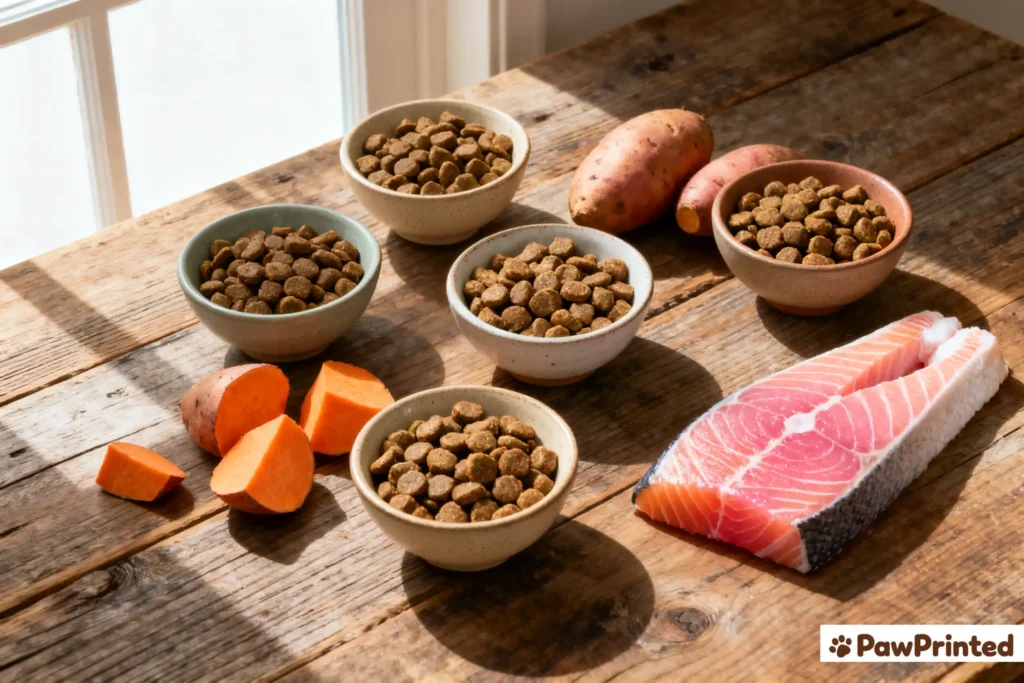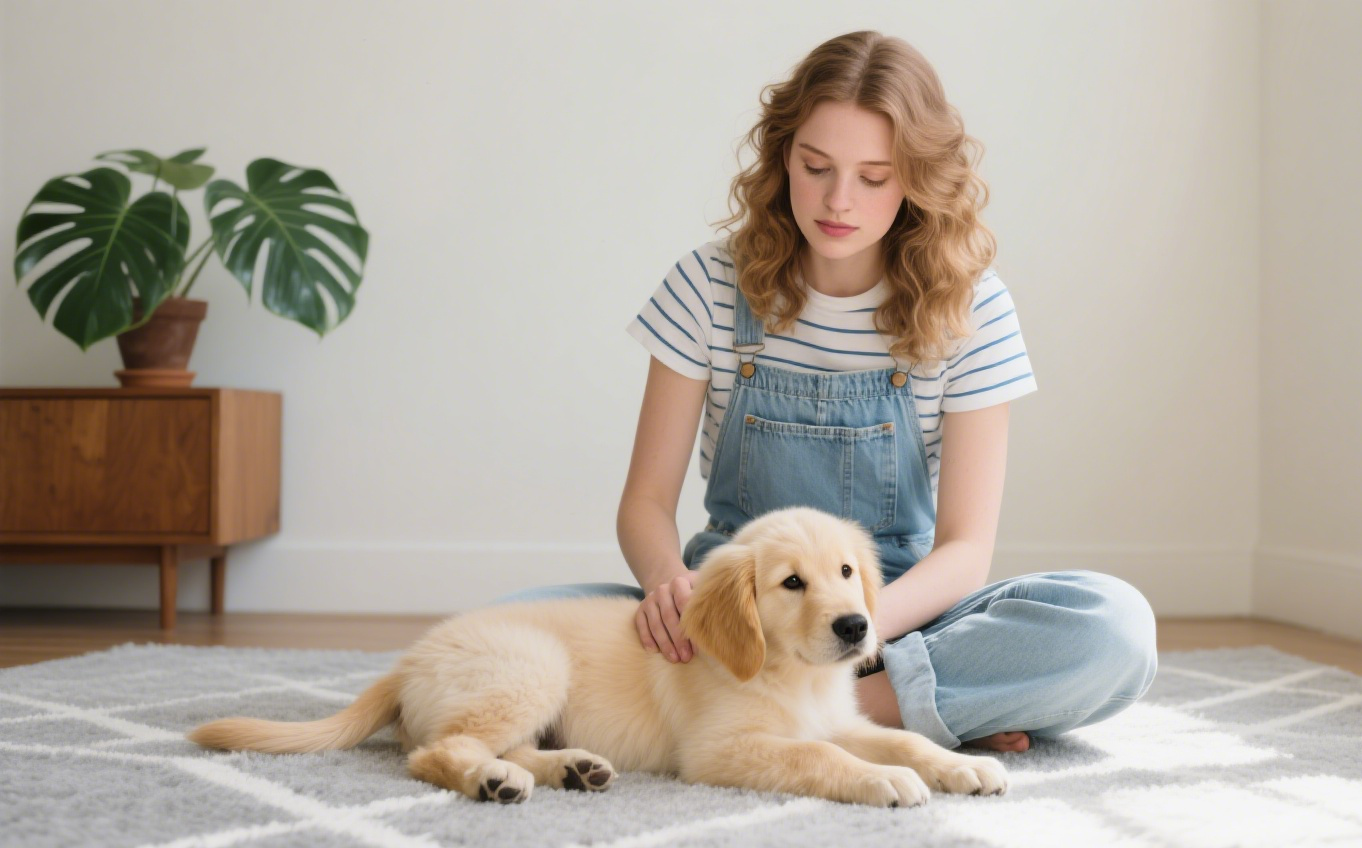More families are trying grain-free formulas for puppies—often because of sensitive tummies or picky phases. But “grain-free” isn’t automatically better; what matters is a complete, balanced recipe with the right proteins, fats, and DHA for growth. Here’s what worked in our kitchen during Ethan’s puppy days, plus the grain-free picks we lean on for gentle digestion and steady energy.
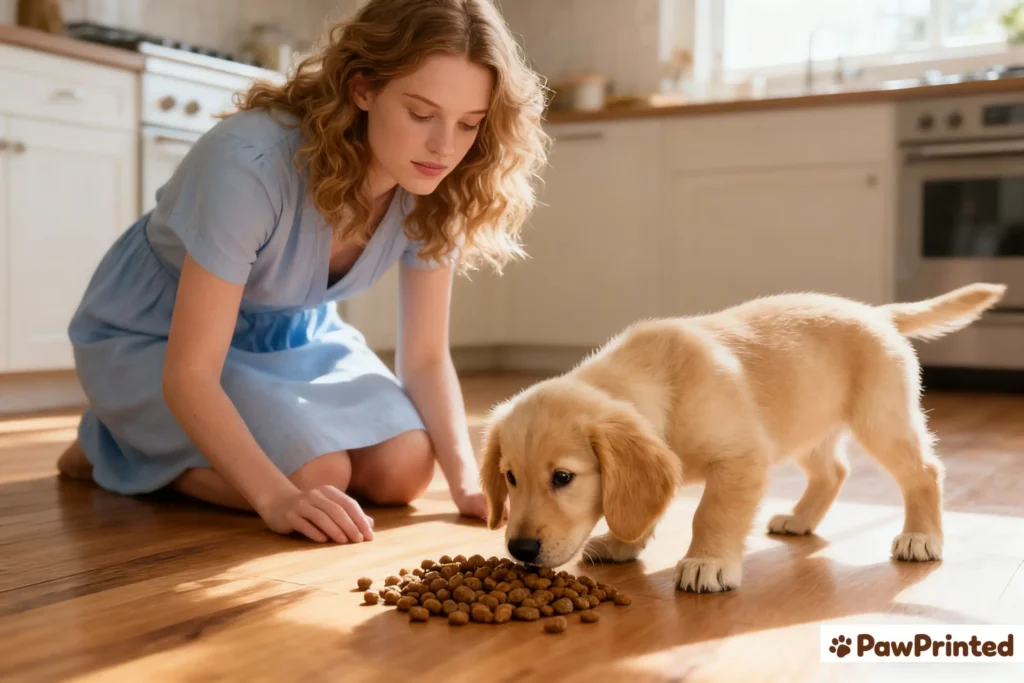
Why Some Puppies Thrive on Grain-Free
Grain-free diets remove common grains (like wheat, corn, or rice) and use alternatives such as sweet potato, lentils, or peas. That can help some pups with suspected grain sensitivities or owners who prefer grain-free rotations. Still, the formula must be complete and balanced for puppy growth, with attention to digestibility, appropriate calories, and DHA for the brain and eyes.
Note: If you have heart-health questions (e.g., taurine, DCM conversations), talk to your vet and stick with well-established brands that formulate to growth standards. The aim is comfort, consistency, and healthy development—not just removing grains.
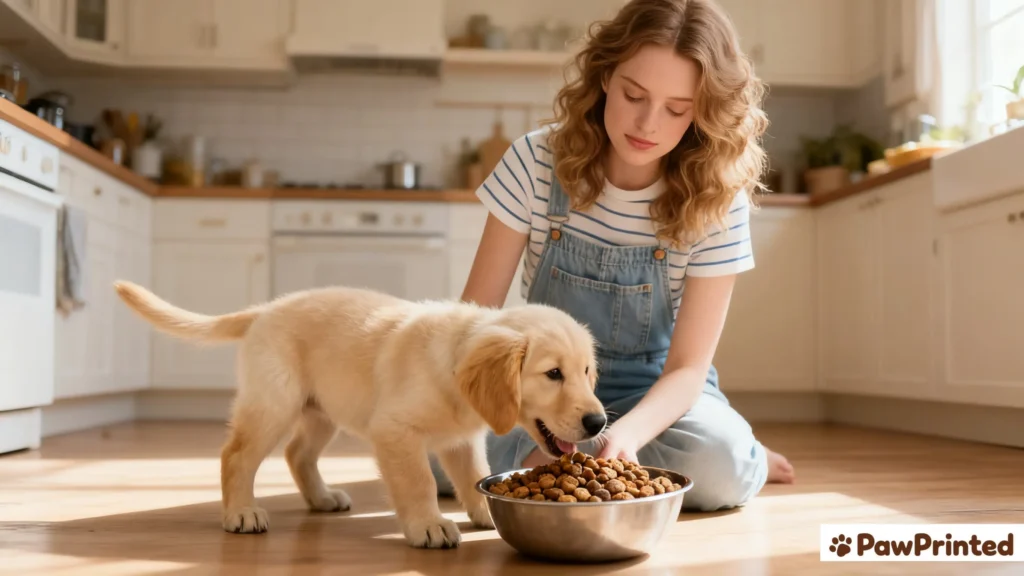
What Worked for Ethan (Our Grain-Free Picks)
When Ethan went through a picky stretch, tiny portions of salmon-forward, grain-free kibble helped—especially formulas with clear protein sources and gentle carbs. Open Farm Puppy Grain-Free (Chicken & Salmon) became our “focus fuel” during training bursts; he finished the bowl and stayed engaged without getting wired.
On weeks when his tummy felt off, Nature’s Recipe Grain-Free (Salmon, Sweet Potato & Pumpkin) gave us predictable stools and calm energy. For easy restocks, we kept a bag of WAG Salmon & Sweet Potato (Grain-Free)—simple ingredient callouts, puppy-friendly bite, and surprisingly good appetite appeal.
When we wanted a higher-protein rotation, Wellness CORE Grain-Free (Salmon, Whitefish & Herring) kept his coat glossy and his attention sharp. For tiny-mouth texture fans, the small-breed grain-free line like Merrick Lil’ Plates (Salmon & Sweet Potato) brought a fun change-up (we used it sparingly alongside puppy-formulated options).
Key Ingredients in Good Grain-Free Puppy Food
- Protein-first (chicken, salmon, turkey, lamb) for growth and lean muscle.
- DHA & EPA for brain and vision development during the first year.
- Gentle carb sources (sweet potato, pumpkin, lentils/peas used thoughtfully).
- Taurine support and balanced minerals; look for growth statements and reputable brands.
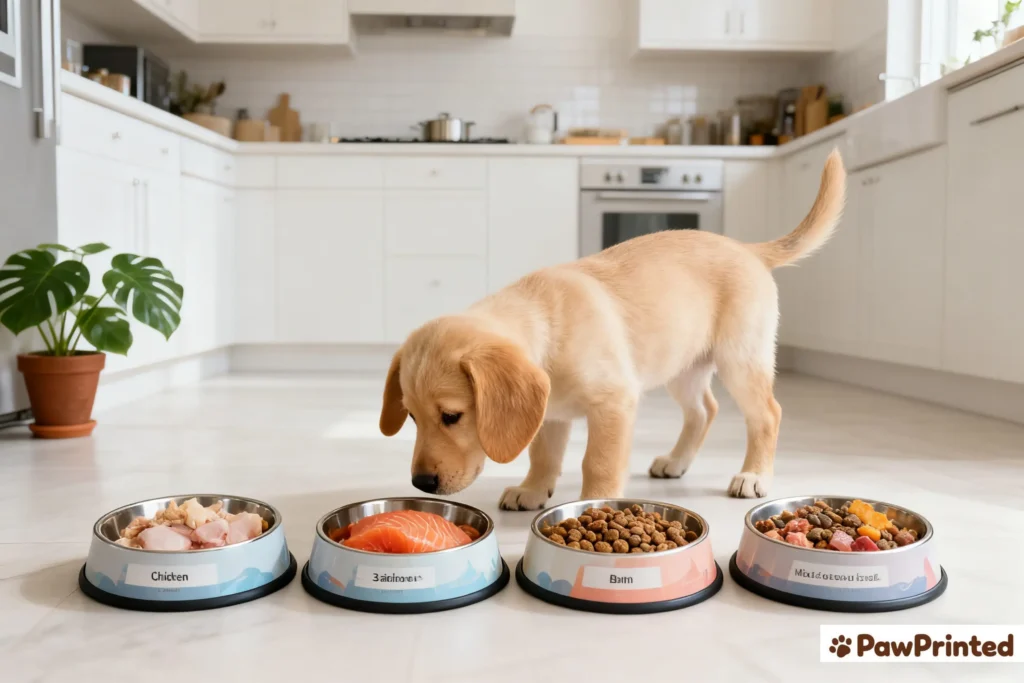
How We Feed Grain-Free Safely
- Transition over 7–10 days: 25% → 50% → 75% → 100%, tracking stool, appetite, and energy.
- Confirm “puppy growth” formulation: stick to brands with clear growth statements.
- Vet check-ins: ask about taurine/heart questions if you’re concerned.
- Rotate thoughtfully: swap proteins or brands every few months if your pup tolerates change well.
Quick Comparison (Top Grain-Free Puppy Foods)
| Option | Why It Helps | Best For |
|---|---|---|
| Open Farm Puppy Grain-Free (Chicken & Salmon) | Clear proteins + salmon oil for DHA; great training-day focus. | Pups needing premium, high-palatability starts |
| Nature’s Recipe Grain-Free (Salmon, Sweet Potato & Pumpkin) | Gentle carbs and pumpkin support steady digestion. | Sensitive tummies; stool predictability |
| WAG Salmon & Sweet Potato (Grain-Free) | Simple ingredient callouts; easy to restock. | Budget-friendly, convenient local/online buys |
| Wellness CORE Grain-Free (Salmon, Whitefish & Herring) | Higher protein; shiny coat and steady energy. | Active pups; protein-forward rotations |
| Merrick Lil’ Plates (Salmon & Sweet Potato) | Small-breed texture focus; great aroma for picky eaters. | Tiny jaws; texture-motivated eaters |
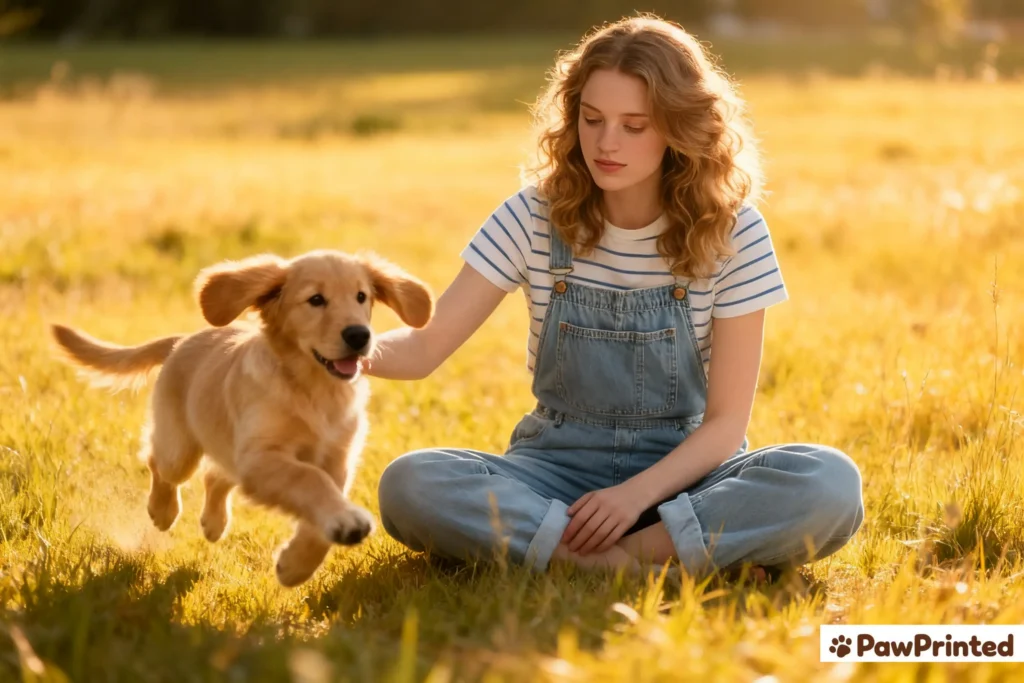
FAQ
Is grain-free puppy food really better?
Not by default. It can help certain pups (e.g., suspected grain sensitivities), but the priority is a complete, balanced formula designed for puppy growth.
Can all puppies eat grain-free diets?
Many can, but not all need to. Choose reputable brands with growth statements and monitor stool, appetite, and energy.
Does grain-free cause heart issues?
Talk to your vet if you’re concerned about taurine/DCM conversations. We prefer large, vet-trusted brands and keep regular check-ins.
Which brands are safest for grain-free puppy food?
Stick with well-known companies formulating for growth and providing clear nutrient profiles. Rotate thoughtfully if your puppy tolerates changes well.
If you don’t want to cook daily, check our dry food picks — those were Ethan’s daily backups.
Wrapping It Up: Grain-free is a tool, not a badge. If your puppy thrives on it—great. Just make sure it’s complete, growth-appropriate, and vet-approved.
Follow PawPrinted On Pinterest
Want grain-free puppy food tips, gentle transitions, and training-day feeding ideas? Follow us on Pinterest and save your favorite setups — we share fresh inspo every week!
